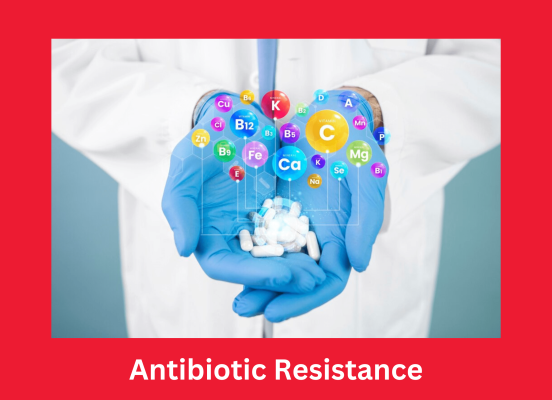
Antibiotic Resistance: Understanding the Global Health Threat and Strategies for Mitigation
- By admin --
- Friday, 08 Mar, 2024
Introduction:
Since the locating at the beginning of the 20 th century, antibiotics suggest promise inside the remedy of bacterial sicknesses. However, one major barrier to the usage of green remedy in modern medicinal drug to deal with infectious disorders is the broadly recounted truth that certain germs are proof against these drugs. This article looks at the methods that underpin antibiotic resistance as well as its causes, effects, and ways to mitigate this urgent danger to global fitness.
Understanding Antibiotic Resistance:
Antibiotic resistance is the result of micro organism growing defense mechanisms towards the actions of antibiotics, which makes the medicines useless for both killing or stopping the development of germs. Numerous factors, like as genetic mutations, horizontal gene switch, and the overuse and abuse of antibiotics, might make contributions to this phenomena. Both commensal and pathogenic micro organism can develop resistance, which exacerbates the unfold of resistant lines in hospital and community environments.
Causes of Antibiotic Resistance:
Antibiotic resistance arises and spreads because of a number of instances. The overprescription of antibiotics and their incorrect utilization in medical settings result in choice stress, which in flip promotes the development of resistant microorganisms. Inadequate strategies to save you contamination in clinic settings permit resistant micro organism to unfold between patients and healthcare personnel. Furthermore, resistance to antibiotics in the environment and food chain is encouraged by using the vast use of antibiotics in aquaculture, animal husbandry, and agriculture.
Consequences of Antibiotic Resistance:
Antibiotic resistance has some distance-reaching outcomes and provides serious obstacles to socioeconomic increase, healthcare systems, and public health. Because patients with resistant infections want longer sanatorium remains, more full-size care, and specific remedy plans, those infections are linked to higher fees of morbidity, loss of life, and healthcare charges. Furthermore, antibiotic resistance raises the opportunity of treatment failure and complications through undermining the efficacy of necessary clinical treatments consisting of surgical operation, chemotherapy, and organ transplantation.
Strategies for Combating Antibiotic Resistance:
A multidisciplinary strategy: encompassing clinical experts, legislators, researchers, business stakeholders, and the general public is wanted to address antibiotic resistance. Important methods encompass:
Antibiotic Stewardship: Putting regulations and methods in location for the prudent use of antibiotics in clinical settings, which includes right prescription strategies, checking out for antibiotic resistance, and de-escalation of medicine as vital.
Improving hand hygiene: isolation precautions, and environmental cleaning are examples of infection prevention and manage strategies that need to be used in healthcare settings to stop the unfold of resistant microorganisms.
Monitoring and surveillance: It is essential to create tracking systems that are well trusted to monitor how antibiotic resistance trends are evolving, recognize the appearance of new threats and guide antibiotics conservation programs and health-promoting media.
Research and improvement: Putting money into studies to create novel antibiotics, non-conventional remedy methods, and diagnostic contraptions so one can fight antibiotic resistance and decorate affected person results.
Education and Awareness: Disseminating knowledge about correct antibiotic use, infection prevention cost and antibiotic resistance consequences among patients, health professionals and the public.
Global Collaboration: Promote international modes of collaboration and coordination amongst countries so as to focus on tackling antibiotic resistance as a global health concern. This also involves replacing resources, best practices and surveillance data with the aim of reducing the cross-border transmission of resistant bacteria.
Conclusion:
The public's health is significantly threatened by antibiotic resistance, which compromises our capacity to deal with bacterial infections and shield patient outcomes. To address this problem, coordinated actions on the local, country wide, and worldwide stages are needed to help the accountable use of antibiotics, bolster infection prevention and manipulate protocols, allocate sources to research and improvement, and encourage cooperation amongst many sectors and disciplines. We can reduce the impact of resistant infections on international health and well-being and keep the efficacy of antibiotics for future generations via putting comprehensive guidelines to fight antibiotic resistance into exercise.





